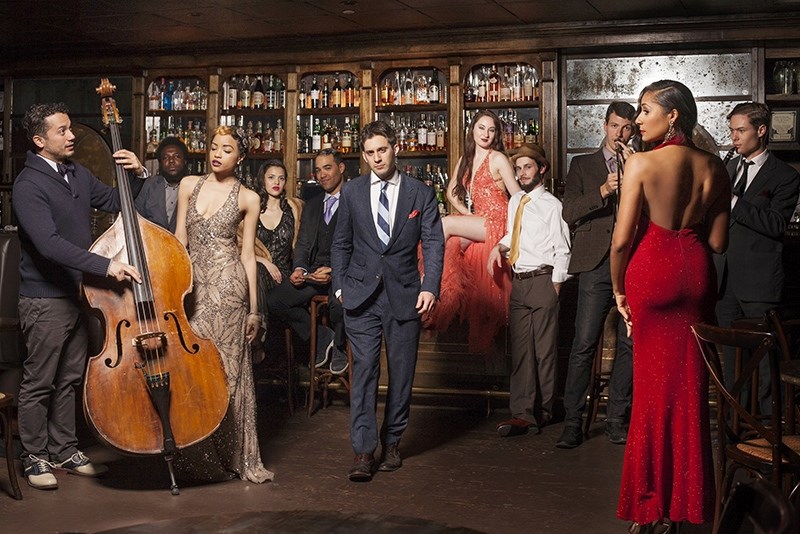"It's a beehive," TD Vancouver International Jazz Festival co-founder John Orysik tells Westender of his state of mind when he's reached by phone one week from the start of the event. Buzz is building around the concert series, too, of course, with the 32nd annual instalment set to bring 1,800 musicians into the city for some 300 shows between June 22 and July 2. As Orysik sorts out last-minute staging details, he explains that music fans are likewise swarming to Vancouver each year to explore all that the jazz fest has to offer.
For some, that could mean seeing Brazilian folk and bossa nova favourite Seu Jorge reinterpreting the back catalogue of the late David Bowie at the Orpheum, or maybe Herbie Hancock collaborator Buster Williams popping off post-bop bass lines at Pyatt Hall. Audio adventurists could consider catching local sax drone soundscaper V. Vecker spiral off into the unknown at the Imperial. The bottom line is that there's something for everyone here, even if you don't know it yet.
"We want to stretch people's ears. You can be in your comfort zone at the jazz festival, but sometimes we like to make you feel something different," Orysik says of the wide-open possibilities within the lineup. "Jazz is a music that has evolved in and of itself over the years. There are so many genres that it has impacted, and other genres that have impacted jazz, so we want to be inclusive. We want to have those genre-benders like V. Vecker – the experimenters as well as people who would be in a traditionalist camp."

Like the music it promotes, the jazz festival has also evolved since its inception in the '80s. While the schedule is rife with global talent, organizers are pumping up a bunch of British acts, like the electronics-spiked Laura Jurd Dinosaur, through their specialized "Made in the UK" concert series, now in its sixth year. 2017's debut of the "Spotlight on Italy" series celebrates anything from rising sax players to tributes to film maestro Ennio Morricone. Cultural cross-pollination abounds at the Orpheum on June 28 when iconic brass master Branford Marsalis mixes jazz and classical with the Vancouver Symphony Orchestra. It's the first time the jazz fest has worked with the VSO in this capacity, this fusion pushing both Vancouver institutions into brave new territory.
"We're not a festival that plays it safe all the time, and I think that's important, because life's not safe," Orysik says, with vigour. "You have to improvise, you have to create new ideas and challenge people."
For instance, American pianist Scott Bradlee's early obsession with jazz and blues tones didn't exactly mesh with the pop-centric tastes of his peer group at the time, but the young musician would ultimately catch their attention by recasting those Top 40 cuts with vintage flavours. Years later, while under-employed and down on his luck, Bradlee gave genre mash-ups another try. His second attempt at throwback covers ended up making him a YouTube star, with his uploads now routinely racking up hundreds of thousands of views.
"It was my last ditch effort to get some kind of work in New York," Bradlee recalls over the line from Los Angeles, where he's rehearsing with his band, Postmodern Jukebox. "I put up a medley of myself playing a bunch of ’80s hits as ragtime and it went viral. Once that happened, it was off to the races."
Ringleader Bradlee is currently working with a rotating cast of over 40 musicians, who converge in his studio and on-stage to transform recent hits into sepia-toned standards. Throughout the band's history, they've delivered Can-Con reggae-pop act Magic!'s "Rude" as a sha-la-la-heavy sock hopper, and injected a Dixieland swing into the Darkness' "I Believe in a Thing Called Love." The project's most recent upload is a simmering, torch-ballad take on alt-rock nerds Weezer's early crunch-up "Say It Ain't So".
When Postmodern Jukebox hits the Orpheum on June 30, Bradlee expects Vancouverites will have a ball trying to sort out all of the stylistic twists.
"There's kind of a light-bulb moment that happens for people when something that they're familiar with gets blended with something that's new," Bradlee explains. "It's almost like the Shazam app, where you're trying to figure out what the song is, and then it dawns on you. That's kind of what our audiences experience. 'Wait a minute, I know this song, what is it? Oh my god, it's Miley Cyrus...but it's doo wop!’"
He adds of his genre gymnastics: "It's really interesting to me how a song's meaning changes. That's kind of the point of Postmodern Jukebox, in a sense: We're taking these songs, stripping them of their production values – if they have auto tune or something idiomatic to the time – and really focusing on what constitutes a song."
The definition of "jazz" will be stretched to its limits throughout the two-week festival, as well. From the ticketed shows at opulent theatres and intimate clubs, to free outdoor concerts being staged at David Lam Park and the newly christened Art Gallery Plaza facing Georgia street, Vancouver music fans will get the chance to expand their musical horizons in countless ways. While Orysik still taps his toes to traditional jazz, it might actually be diversity that truly defines what the Vancouver International Jazz Festival is all about.
"It would be boring to go out to a festival where it's essentially one genre, back to back, day after day. I don't know, I'm just past that," the veteran organizer says, adding, "There's just so much impactful music out there. People should get a chance to hear it."


